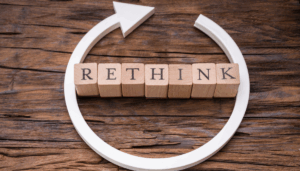Tips to Create a System for Monitoring and Enhancing Customer Relationships
If you’ve traveled on an airplane, had your car serviced at a car dealership, or made a purchase in certain retail establishments, then you have likely been asked to provide feedback on your experience. As they jockey for market share, gathering customer feedback is an important strategic priority for business-to-consumer (B2C) companies. But what about business-to-business (B2B) companies like those in our industry? Gathering customer feedback tends to get buried under the weight of staffing issues, cost reduction plans, and emphasis on new sales growth. In this article, we discuss the importance of feedback and share some thoughts on launching a system to gather helpful information from customers.
“This Email Is to Inform You Of Our Intent to Terminate….”
If you have ever received an email or a letter with this opening line, you know the disappointment of losing a customer. This is particularly frustrating when this notice comes completely out of the blue. In reality, the field manager was likely aware of issues but was hesitant to make their supervisor aware of problems. Relying solely on field managers to provide insights into the “temperature of the customer relationship” may not always give an accurate and unbiased view. Field managers may have their perspectives and limitations, potentially distorting the real picture.
Barriers to Gathering Feedback
There seem to be two primary barriers to gathering feedback. The first is the assumption that “no news is good news.” Some customers may not proactively voice their concerns, assuming their silence implies satisfaction. However, this silence can mask underlying issues. In other words, a common obstacle to gathering feedback is that asking for feedback might arouse some customer complaints/issues, and it is better to simply let sleeping dogs lie. This kind of thinking is misguided and could lead to lost business.
The second obstacle to gathering feedback is the knowledge that if you ask for feedback, there is an assumed responsibility to act on that feedback. Acting on feedback causes companies to change processes and systems to respond to customer needs – this requires work. Without a clear plan, feedback can be overlooked, or worse, ignored. It’s essential to have a strategy for handling and acting on the feedback gathered.
Steps For Gathering Customer Feedback
The last and potentially greatest obstacle to gathering feedback is getting started. Provided below are some simple steps to create your information-gathering process.
- Create a list of all customers and identify at least two contacts per customer. This list will serve as the foundation for your feedback-collection efforts.
- Select a feedback methodology and determine the questions you want to ask. Consider studying the Net Promoter System, which uses two key questions to gauge customer satisfaction and loyalty. These questions can provide valuable insights into the customer relationship.
- Be prepared to discuss the feedback you receive and, most importantly, be willing to make changes based on the feedback. An open and responsive approach to feedback is essential for improving janitorial services.
Incorporating these steps into your janitorial service approach can help you build stronger customer relationships, maintain cleaner and healthier workplaces, and ensure customer feedback drives continuous improvement.






